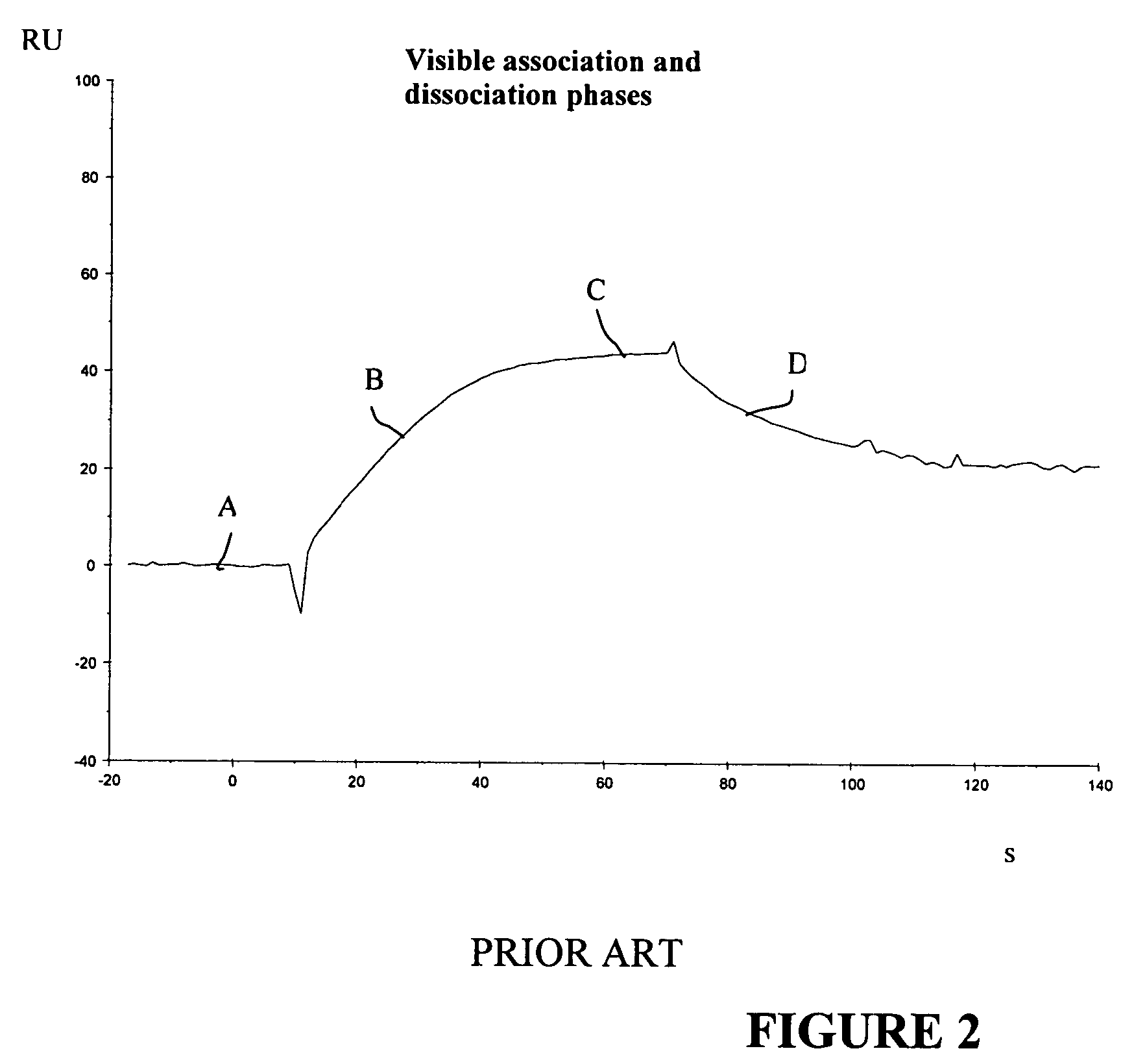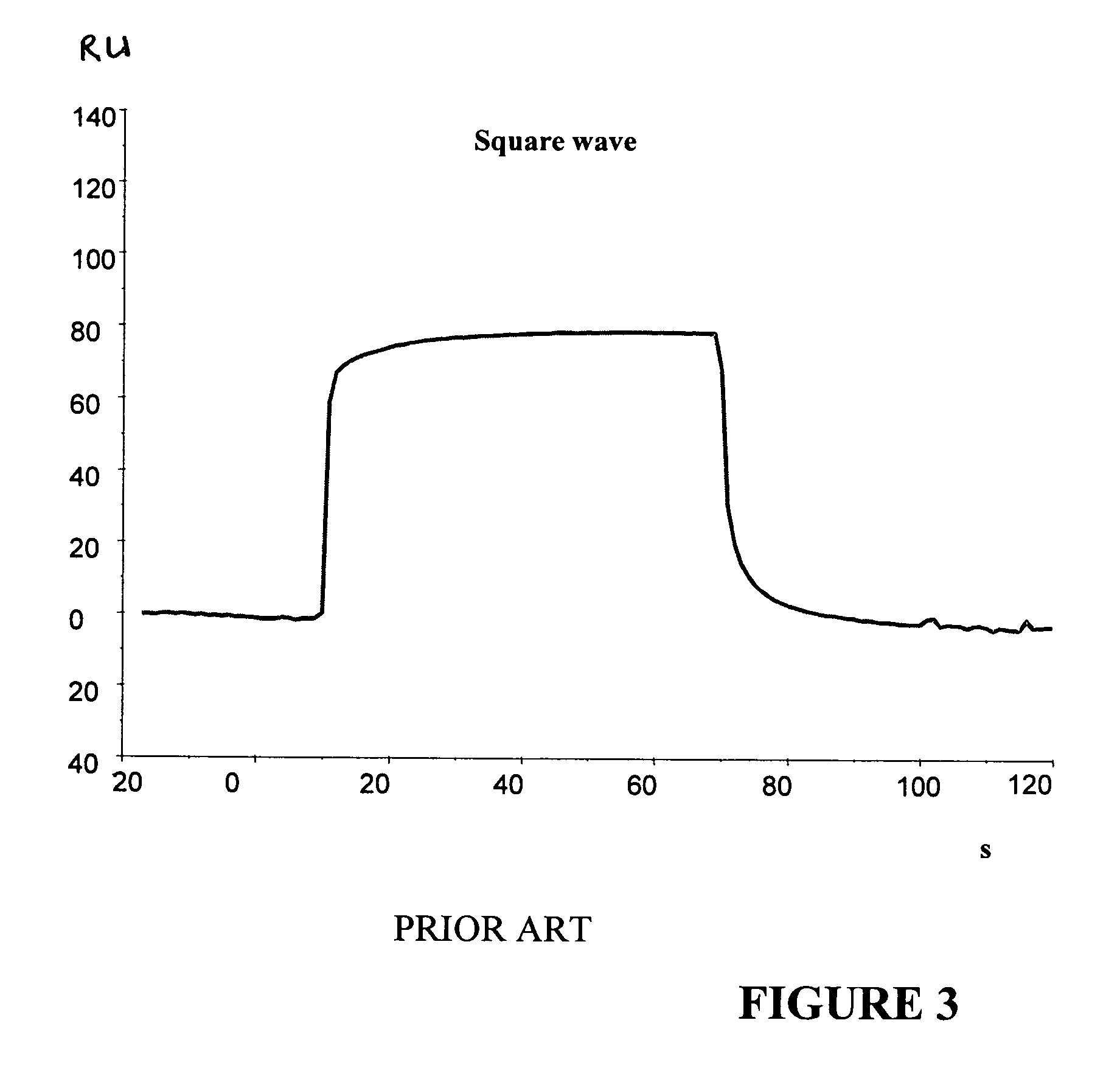Method of determining site-specificity and kit therefor
a site-specificity and kit technology, applied in the field of method of determining site-specificity and kit therefor, can solve the problems of increased unbound drug concentration, undesirable side effects or unexpected changes in drug disposition
- Summary
- Abstract
- Description
- Claims
- Application Information
AI Technical Summary
Problems solved by technology
Method used
Image
Examples
example 1
A. Example 1
Determination of HSA-Binding Site Specificity
Immobilization of HSA on Sensor Chip
[0077]HSA (Sigma A-4327, Lot#30K7615; Sigma, U.S.A.) was diluted to 20 μg / ml in 10 mM sodium acetate pH 5.0 and immobilized on sensor chip Series S CM5 according to the manufacturer's instructions using amine coupling with a contact time of 7 minutes and a flow of 10 μl / min. Running buffer was 10 mM phosphate buffer and the temperature was maintained at 25° C.
Site-Specificity Experiments
[0078]Compounds binding to HSA at a known site with a square wave-like binding curve were mixed with compounds binding to HSA at an unknown site and having a binding curve with visible association and dissociation phases. The compound giving visible association and dissociation phases was kept at a constant concentration and was mixed with a “square wave” compound at different concentrations.
[0079]Two compounds having visible association and dissociation phases and unknown HSA-binding sites...
example 2
B. Example 2
Binding Studies of Low Molecular Weight Kinase Inhibitors
Capture of a Protein Kinase on a Sensor Chip
[0085]100 μg / ml of of Penta-His™ antibody, BSA-free (Qiagen, Venlo, Netherlands) in 0.15 M NaCl was diluted to 30 μg / ml in 10 mM sodium acetate buffer pH 5.0 and immobilized on a Series S Sensor Chip CM5 by amine coupling according to the manufacturer's instructions. The contact time was 10 min, the flow rate was 10 μl / min, and 10 mM PBS was used as running buffer. A little less than 12000 RU of antibody were immobilized.
[0086]A protein kinase (Mw 33, pI 6.5) with a C-terminal His-tag (Schering A G, Berlin, Germany), 0.34 mg / ml in 50 mM MES / Hepes pH 7.3 and 200 mM NaCl, was diluted 10 times to 34 μg / ml in running buffer (10 mM PBS), and then injected over the antibody for 3 min at a flow rate of 5 μl / min, followed by 2.5 minutes injection of EDC / NHS and ethanolamine-HCl to stabilize the baseline. A little more than 4000 RU of the kinase were captured.
Profiles of Binders A...
PUM
| Property | Measurement | Unit |
|---|---|---|
| pH | aaaaa | aaaaa |
| temperature | aaaaa | aaaaa |
| pH | aaaaa | aaaaa |
Abstract
Description
Claims
Application Information
 Login to View More
Login to View More - R&D
- Intellectual Property
- Life Sciences
- Materials
- Tech Scout
- Unparalleled Data Quality
- Higher Quality Content
- 60% Fewer Hallucinations
Browse by: Latest US Patents, China's latest patents, Technical Efficacy Thesaurus, Application Domain, Technology Topic, Popular Technical Reports.
© 2025 PatSnap. All rights reserved.Legal|Privacy policy|Modern Slavery Act Transparency Statement|Sitemap|About US| Contact US: help@patsnap.com



